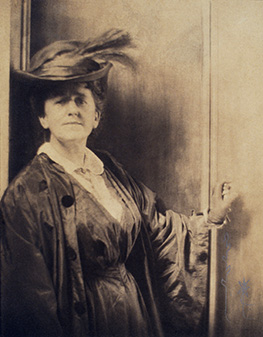
She deferred her career that would bring her international fame until her three children were adolescents. She entered the prestigious Pratt Institute in Brooklyn, New York at the age of 37 to study portrait painting. At the age of 45 she opened her own portrait studios and in just three years she was considered by some to be the greatest photographer in the United States. Here is her remarkable story.
The Early Years
Gertrude Stanton was born on May 18, 1852 in Fort Des Moines, Iowa, later to be known simply as Des Moines. Her parents were John W. Stanton and Muncy Boone Stanton.
n 1858 the Pike’s Peak Gold Rush erupted and in 1859, Gertrude’s father moved to the Colorado Rocky Mountains. He ventured by himself to Eureka Gulch to try his luck. He realized that hunting for gold was a hit-and-miss proposition but providing lumber for the building boom that would surely develop was a sure thing. He built a sawmill and was right. A year later, John brought his family west to live with him. The town of Eureka Gulch was renamed Golden and became the capital of the Colorado Territory. John was well liked and was elected Golden’s first mayor. Many of Gertrude’s playmates in Golden were American Indians and her contact with them resulted in a deep regard for them and would be the heart of some of the most beautiful and moving portraits.
In 1864 the effects of the Civil War were felt in the Colorado Territory and John thought that it had become too dangerous for his family, so they moved back to the East Coast and settled in Brooklyn, New York. There John worked in mineralogy and Muncy rented out rooms in their home to boarders to earn a little extra money. Gertrude was already showing an interest in art, even at an early age. She removed some of their paintings from the wall, placed them flat on the floor and knelt next to them, pouring over them, examining every detail with the intent of understanding how she could to that.
Continue reading “Gertrude Käsebier”(242)
